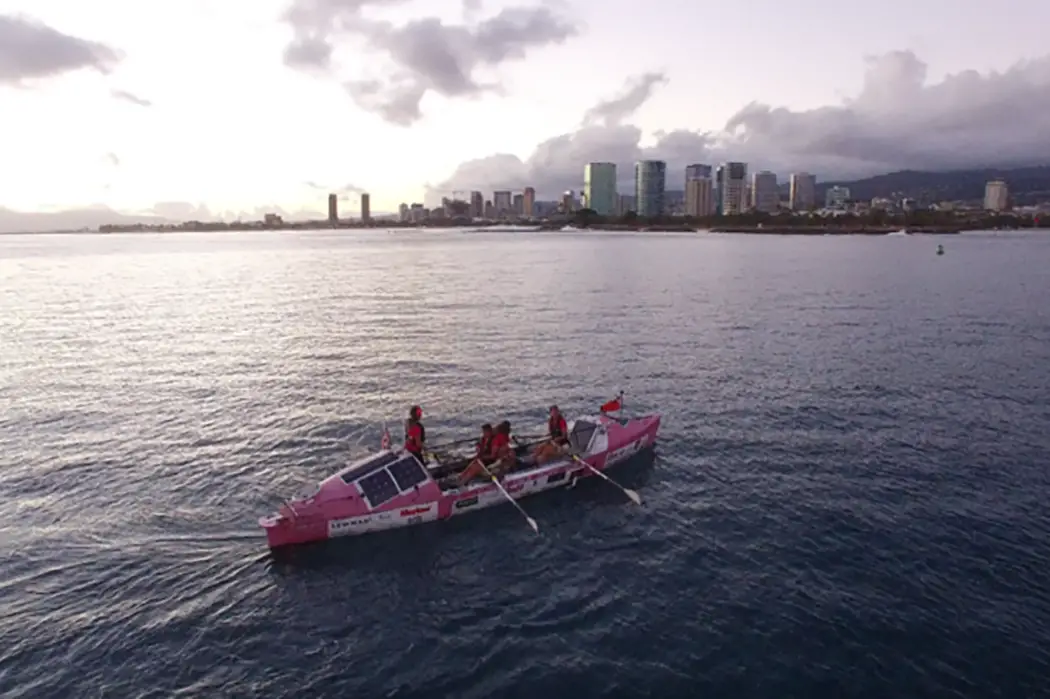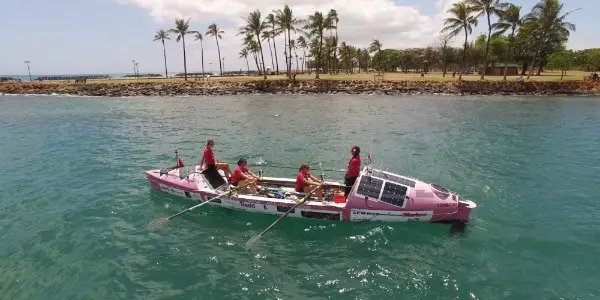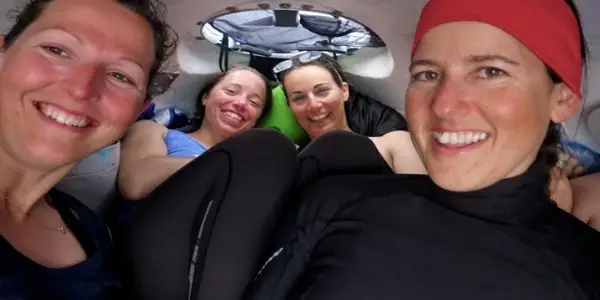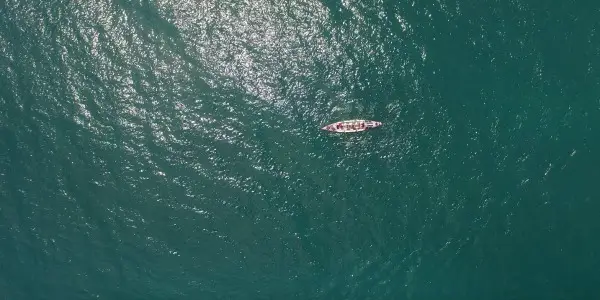LOSING SIGHT OF SHORE: An Inspiring Journey

It took me a while to discover the wonderful world…
I feel about sea voyages pretty much the same way I feel about space travel; why? Why would you do that to yourself?
Months stuck in a tiny space in the middle of a vast, inescapable expanse. Sure, you get the beautiful views, but you are separated from your loved ones for months at a time, you only have tasteless, vacuumed-packed food to eat, and there is nowhere to hide if it all just gets a bit much. It sounds more like a punishment than something you’d actually volunteer for.
Thank goodness then, for Losing Sight Of Shore, which lets you experience the breathtaking scenery and highs and lows of an epic nautical journey, from the comfort and safety of dry land.
A Gruelling Voyage
Losing Sight Of Shore follows Natalia Cohen, Emma Mitchell, Laura Penhaul, Isabel Burnham, Lizanne Van Vuuren and Meg Dyos (the latter three taking one leg of the journey each) as they row more than 8000 miles from San Francisco to Cairns, Australia. The scale of their journey is so unprecedented that they aren’t actually breaking any records; they are setting them.
Similar undertakings often involve the help of a support boat that follows alongside the main boat in case of trouble. Not this time. The crew do have the help of rowing expert Tony Humphreys whilst they are on land at their supply stops in Hawaii and Samoa. But whilst they are at sea, if anything goes wrong, they only have each other for practical support.

What name do the crew decide to give the trusty vessel that serves as their home for the better part of a year and that will be their only place of shelter from the ravages of the mighty ocean? Doris. Proof that the six women have a sense of humour about their quest, despite its enormity!
Life on Doris has a different rhythm to life on dry land. Forget getting eight hours sleep, the women row in teams of two in two hour shifts; two hours on the oars, two hours to do whatever else needs doing, including sleep. It’s as if the tiny boat has its own time zone.
Mental Strength Is Key
Though undoubtedly physically gruelling, the main theme of this film is how much more important mental strength was than physical during the undertaking of the long, perilous journey.
So much of what they go through would destroy the souls of lesser mortals. Due to an equipment malfunction, the four must turn back soon after the commencement of their journey; when they hit land they’re actually further away from their destination then when they started.
It’s these stop-over points at Hawaii and Samoa that seem the most difficult to deal with. After spending days on these island paradises, eating anything they want, meeting up with their families and having space to roam, the mental strength that getting back into Doris must have taken is astonishing.

And they undergo even more mental hardship. One of the crew learns of her uncle’s death from cancer over the unreliable satellite phone. Another experiences hellish sea-sickness, but due to the frenetic two hours on, two hours off schedule, she can do nothing but carry on rowing. The blistered hands of the whole crew are wince-inducing.
Being a rowboat, and thus not having an engine, they are pretty much entirely subject to the whims of the wind and the tides. The distance they cover each day varies wildly; at their best, they manage upwards of fifty miles, but on their worst days the figure gets into the minus numbers. They set off envisaging the overall journey taking six months, but by the time they’ve finished, it takes nine. It’s a testament to how close the team is that they never seem to fight, despite all these challenges facing them.
Not All Plain Sailing
For the most part, Losing Sight Of Shore is a compelling, engaging work. I just had a couple of problems.
I don’t think the film does quite enough to differentiate between the women; by the time it was over I struggled to name them all. There are attempts. You learn, for example, that Natalia is an avid traveller, and Isabel likes to climb mountains. But these are the sort of things you’d just assume about people who would be drawn to an expedition like this. I would have liked to see a bit more depth in the exploration of their different personalities.

Secondly, the whole film is frustratingly heavy on clichés. Director Sarah Moshman is all about empowering women; her previous film was actually called The Empowerment Project. This is all well and good, and very commendable. But so often these well-meaning projects are adorned with inane, hackneyed clichés, and that’s true here. Sure, if anyone has the right to say that ‘anything’s possible’, it’s these women. But considering the immensity of their undertaking, and the film’s general honesty, the proliferation of platitudes is disappointing.
In Conclusion
By the time this documentary had finished, I was no closer to jumping in a rowboat then I was at the beginning. But that’s not the point of Losing Sight Of Shore. As they say in the movie; “Everyone has their own Pacific to cross.” Moshman‘s whole raison d’etre is to empower women and girls to accomplish all the things that they want to do, whatever shape those accomplishments take. And after watching these six brave women battle all that nature has to throw at them, it’s hard not to feel inspired.
Which documentaries have inspired you?
Losing Sight Of Shore is available on Netflix on May 1.
Does content like this matter to you?
Become a Member and support film journalism. Unlock access to all of Film Inquiry`s great articles. Join a community of like-minded readers who are passionate about cinema - get access to our private members Network, give back to independent filmmakers, and more.
It took me a while to discover the wonderful world of cinema, but once I did, everything just fell into place.













